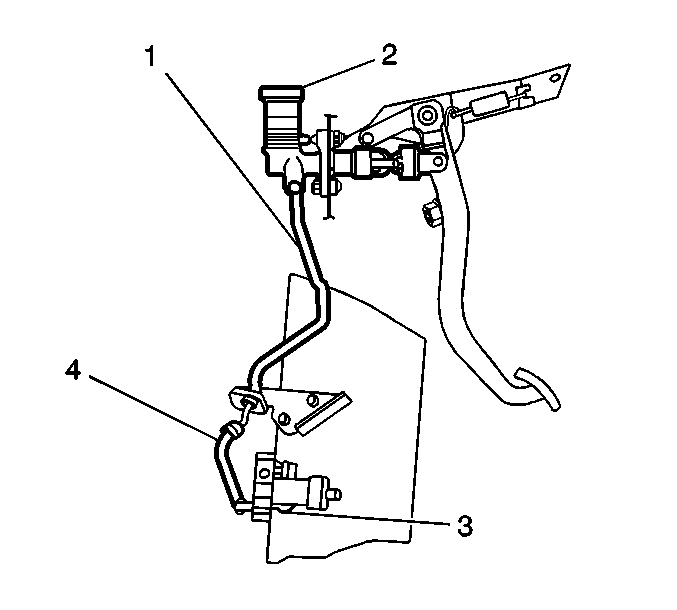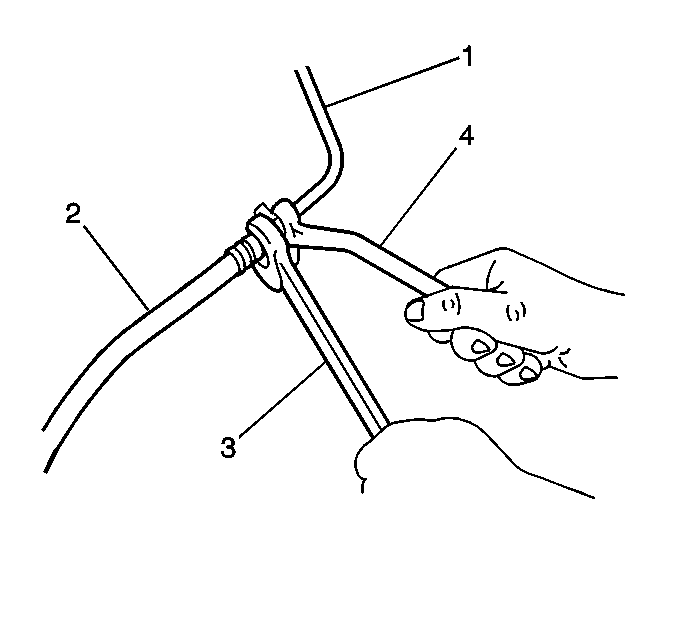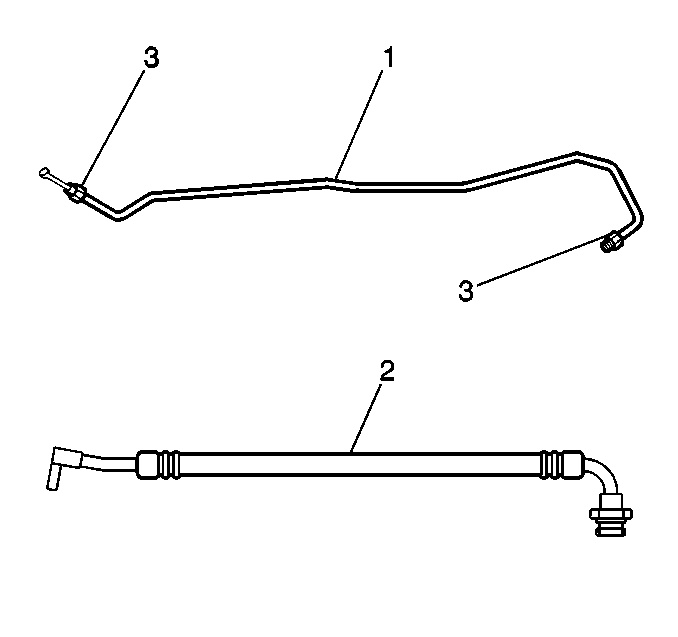Hydraulic Hose Replacement Hose Replacement
Removal Procedure
- Remove the reservoir (2) cap.
- Remove the dust and the dirt from the hoses (4) .
- Drain the fluid.
- Loosen the nut (3).
- Remove the E-clip (4) from the hose (2).
- Remove the flare nuts from the hose (2) and the pipe (1) with 2 wrenches (3,4).
- Remove the hydraulic hose (2) .
- Inspect the hoses (2) for dents, kinks, cracks, dirt and dust. Replace if necessary.




Installation Procedure
- Install the hydraulic hose (2) .
- Install the flare nuts with the 2 wrenches (3,4).
- Install the E-clip (4) that joins the hoses (2) and the pipes (1).
- Fill the reservoir to the MAX level.
- Bleed the system. Refer to Hydraulic Clutch Bleeding .


Notice: Use the correct fastener in the correct location. Replacement fasteners must be the correct part number for that application. Fasteners requiring replacement or fasteners requiring the use of thread locking compound or sealant are identified in the service procedure. Do not use paints, lubricants, or corrosion inhibitors on fasteners or fastener joint surfaces unless specified. These coatings affect fastener torque and joint clamping force and may damage the fastener. Use the correct tightening sequence and specifications when installing fasteners in order to avoid damage to parts and systems.
Tighten
Tighten the flare nuts to 16 N·m (12 lb ft).

Hydraulic Hose Replacement Pipe Replacement
Removal Procedure
- Remove the reservoir (2) cap.
- Remove the dust and the dirt from the pipes (1) .
- Drain the fluid.
- Loosen the nut (3).
- Remove the E-clip (4) from the pipe (1).
- Remove the flare nuts from the hose (2) and pipe (1) with 2 wrenches (3,4).
- Remove the hydraulic pipe (1) .
- Inspect the pipes for dents, kinks, cracks, dirt and dust. Replace if necessary.




Installation Procedure
- Install the hydraulic pipe (1) .
- Install the flare nuts with 2 wrenches (3,4).
- Install the E-clip (4) that joins the hoses (2) and the pipes (1).
- Fill the reservoir to the MAX level.
- Bleed the system. Refer to Hydraulic Clutch Bleeding .


Notice: Use the correct fastener in the correct location. Replacement fasteners must be the correct part number for that application. Fasteners requiring replacement or fasteners requiring the use of thread locking compound or sealant are identified in the service procedure. Do not use paints, lubricants, or corrosion inhibitors on fasteners or fastener joint surfaces unless specified. These coatings affect fastener torque and joint clamping force and may damage the fastener. Use the correct tightening sequence and specifications when installing fasteners in order to avoid damage to parts and systems.
Tighten
Tighten the flare nuts to 16 N·m (12 lb ft).

